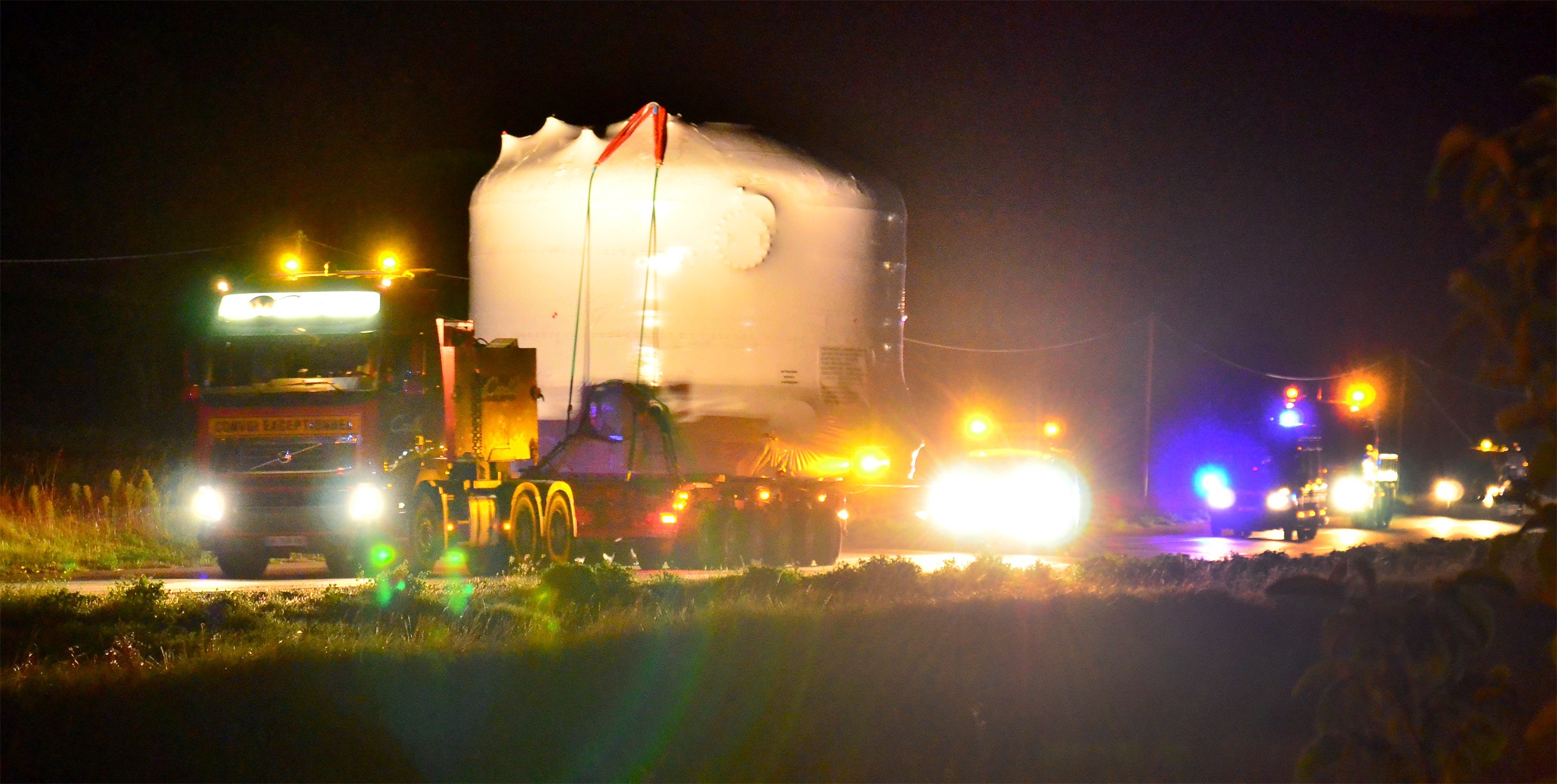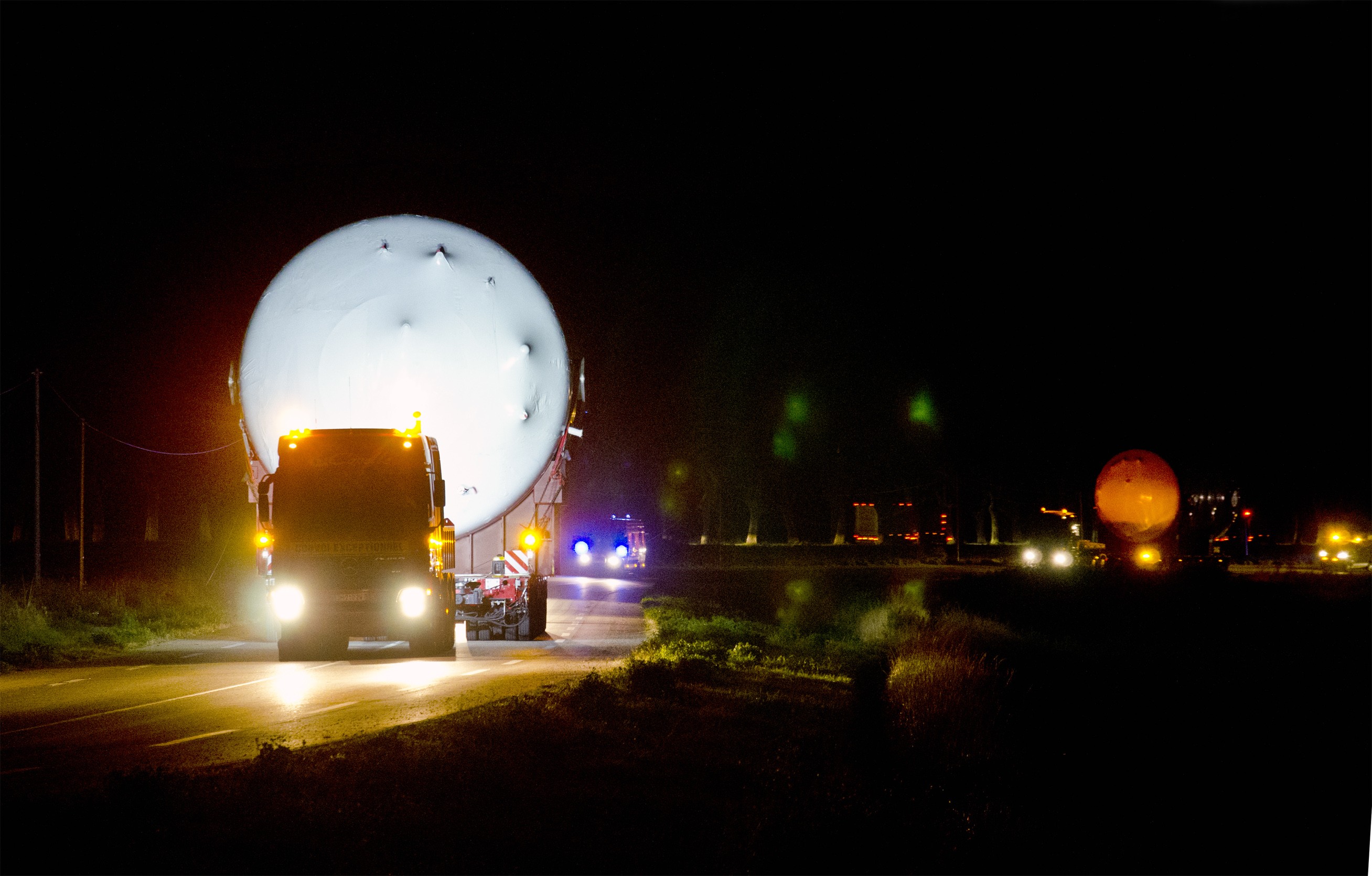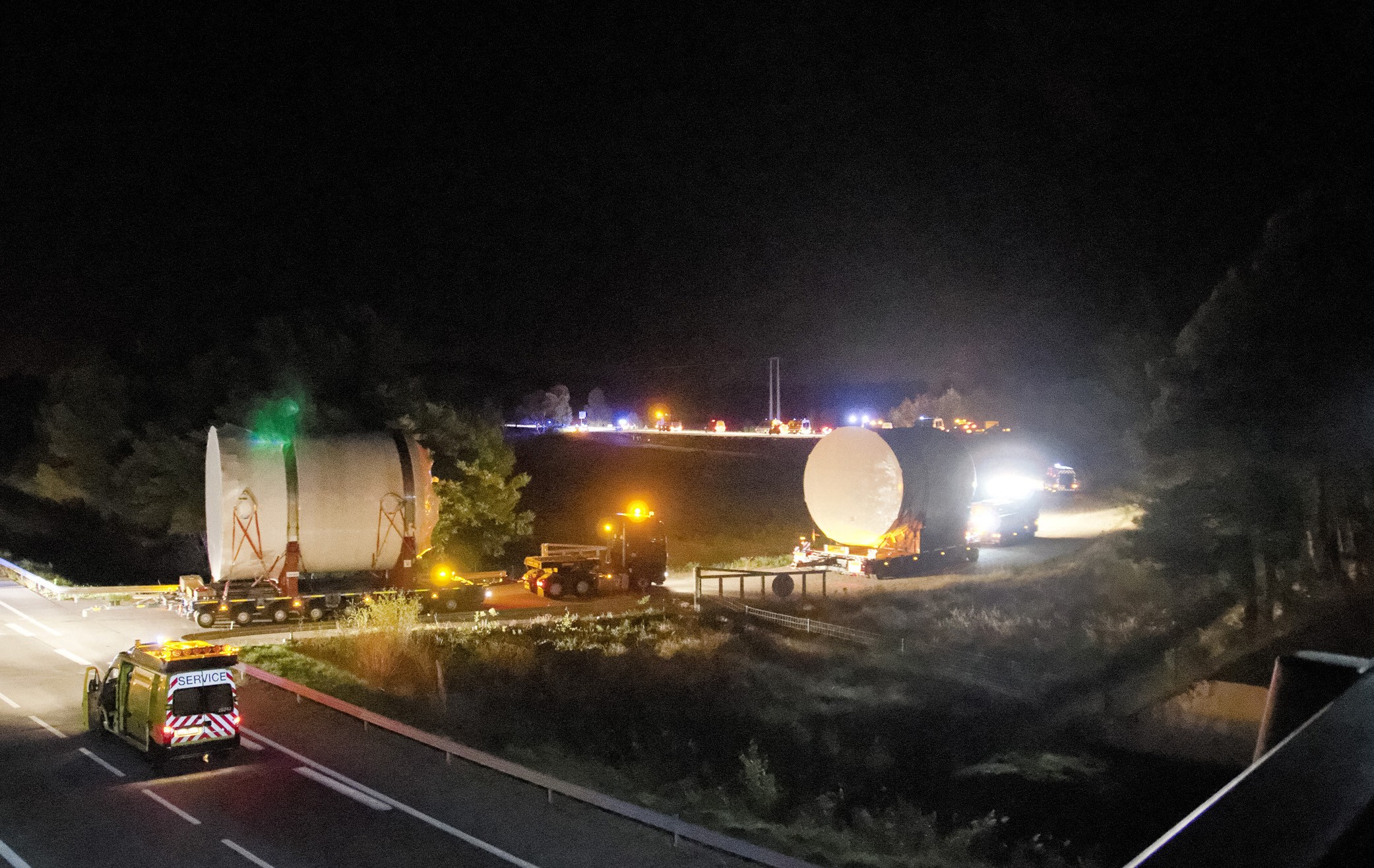Sixth convoy in nine months
It wasn't Christmas yet, but all the lights were there: blue, red, yellow, white ... blinking, revolving and pulsating.
Over three nights, from 14 to 17 September, the sixth ITER convoy in nine months slowly rode along the 104-kilometre ITER Itinerary bypassing 16 villages, negotiating 16 roundabouts and more than 30 bridges, and crossing the thruway in two different locations.
The three trailers of the convoy each transported a large drain tank sent by the US Domestic Agency as part of its in-kind contributions to the project. The two largest tanks (79 tonnes) are destined for the the tokamak cooling water system; the smaller tank (46 tonnes) is needed as part of the neutral beam injection system.
While ITER convoys are financed by Europe, their organization is managed jointly by Agence Iter France, the French authorities and the global logistics group DAHER. Despite the experience accumulated since the first test convoy two years ago, the transport of an ITER load is never a routine operation.
The convoy travels in a kind of protective "bubble" containing a long and spectacular procession of men and machinery. French gendarmerie motorcycles and vans, a pilot car, rear-escort and assistance vehicles, more gendarmes, technical personnel to remove the traffic signs before and after the passage of the convoy ... an average convoy mobilizes close to one hundred people and requires the establishment of approximately 200 kilometres of detours to divert regular road traffic.
The drain tanks had shipped out of Newark, New Jersey on 28 August. They were unloaded at Marseille industrial harbour of Fos-sur-Mer on 6 September and completed the maritime segment of the trip (the crossing of an inland sea) on 9 September. After three nights of road transport, the convoy arrived on site at 3:00 a.m. on 17 September, right on schedule.






